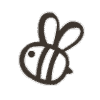How do you know if your baby is ready for solids?
Each milestone in your child’s life is precious - the first 12 months especially so as they grow so much during this first year. And introducing solids is right up there as one of the most important milestones.
Solids means sitting them up in that cute high chair you have ready for them and using those baby bibs, bowls and spoons you were given at your Baby Shower. But as exciting as it is to introduce variety and a new experience into your child’s diet, you don’t want to rush into it either.
Is my 4 month old ready for food?
A lot of people wonder if their 4 month old is ready for solids.
It is recommended that your baby be at least 4 months old before starting solids. This is the age at which their tiny tummy has developed the enzymes they need to break down solid food. But you don’t need to rush into giving your baby solids at this age either. There is some evidence that babies who are breastfed exclusively for the first 6 months of their life may have a lower risk of allergies, diabetes and obesity.
Key developmental signs to know my baby is ready for solids
Along with your baby’s age, here are some other key developmental signs to look out for to know if your baby is ready for solids. :
- Your baby no longer displays the tongue-poke reflex.
- They are able to hold their head unsupported.
- They show curiosity when you eat and reach out for you to share from your plate or mouth.
- They imitate eating behaviour (chewing for example).
- Your baby is becoming coordinated and can look at food and grab at it.
Whilst these signs will help you to know that the time could be right for your baby to start enjoying solids, we recommend that you talk to your baby’s doctor before taking this next step.

When & how should I introduce solid foods to my baby?
We’ve spoken about when to start solids in terms of age, but choosing the right time of the day is also important in ensuring that your baby’s first meal times are happy and successful. A quiet time of the day, when both you and your baby are relaxed is perfect. You should also ensure you have plenty of time up your sleeve. Don’t start solids on a busy day, or at a time of the day, when you need to rush out the door; your baby might take some time to get the hang of eating and things can get messy. And if at first you don’t succeed, don’t fret. If your baby isn’t interested, wait until tomorrow and try again.
Tips for introducing solid foods
- Have everything ready before you start; your high chair should be in position, food prepared and in the bowl and your baby should have one of their cute baby bibs on.
- Breastfeed (or offer infant formula) first.
- Begin by offering a few teaspoons of food, once a day.
- Let your baby be your guide when it comes to portions; don’t force them to finish a portion of food if they are not interested in it.
- Don’t be put off if your baby doesn’t accept new foods the first time around. You may need to try a new food several times for them to accept it.
- Always supervise your baby at mealtimes.
- If you have heated or defrosted baby food, always check the temperature yourself before offering it to your baby.
- Wash yours and your baby’s hands before their meal.
What equipment do you need for feeding your baby solids?
When it comes to starting your baby on solids there are a few essentials you will need to have on hand to get started:
-
High Chair - Your baby needs to sit up to eat so you will need a high chair or baby seat for them to sit comfortably and safely in.
-
Baby Bibs - Babies are messy eaters! And we think that’s half the fun of the experience. But to keep things from getting too out of hand you will need a good supply of baby bibs. Our waterproof bibs are wipe down and they catch those food spills in their own built in pockets. They are also lightweight and foldable, making them easy to pack into your baby bag for when your baby is eating out and about. Our dribble bibs also work beautifully for feed times and are super useful when it comes to wiping your baby’s face and mouth as they get the hang of eating.
-
A spoon and an extra one for your baby to hold onto.
-
A bowl.
-
And of course, solid foods.
So there you have it, a simple guide to starting your baby on solids. And we have one last tip for you; make sure you get a milestone picture of your baby experiencing solids for the very first time. You can share them with us at @snugglehunnykids


